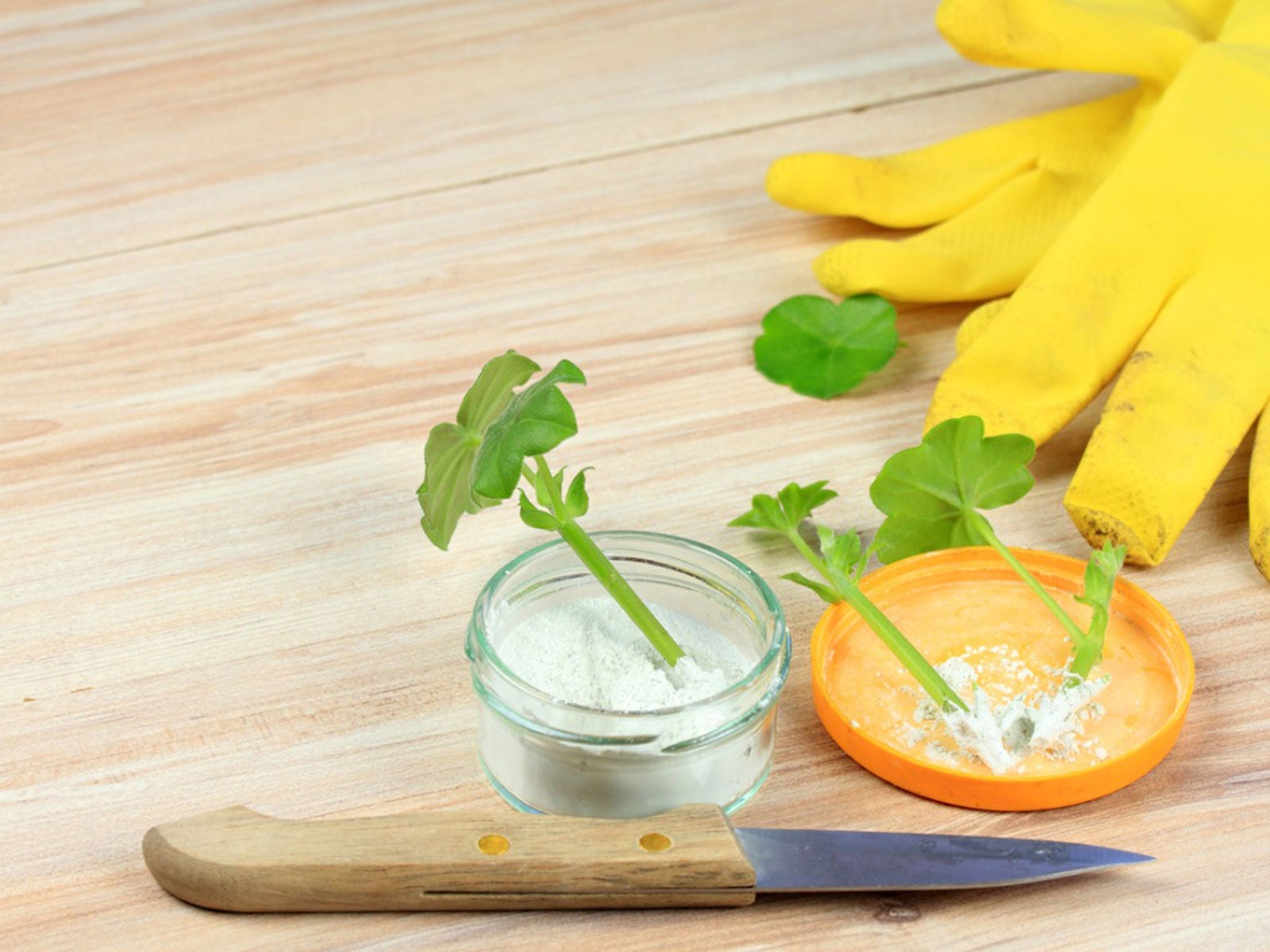Root Stimulating Hormone: How To Use Rooting Hormones For Plant Cuttings

One way to create a new plant identical to the parent plant is to take a piece of the plant, known as a cutting, and grow another plant. Popular ways to make new plants are from root cuttings, stem cutting, and leaf cuttings—often using a rooting hormone. So what is a rooting hormone? Keep reading to find out this answer as well as how to use rooting hormones.
What is Rooting Hormone?
When propagating plants using a stem cutting, it is often helpful to use a root-stimulating hormone. Rooting hormone will increase the chance of successful plant rooting in most cases. When rooting hormones are used, the root will generally develop quickly and be of higher quality than when plant-rooting hormones are not used. While there are many plants that root freely on their own, using a root hormone makes the task of propagating difficult plants much easier. Some plants, such as ivy, will even form roots in water, but these roots are never as strong as those that are rooted in soil using a rooting hormone.
Where Can You Buy Root Hormone?
Plant rooting hormones come in a few different forms; the powdered is the easiest to work with. All types of rooting hormones are available from online garden sites or at most garden supply stores.
How to Use Rooting Hormones
Successful propagation always begins with a fresh and clean cut. Remove leaves from your cutting before starting the rooting process. Place a little bit of the rooting hormone in a clean container. Never dip the cutting into the rooting hormone container; always put some into a separate container. This keeps the unused rooting hormone from becoming contaminated.
Insert the cutting stem about an inch (2.5 cm.) into the root-stimulating hormone. The new roots will form from this area. Prepare a pot with moist planting medium and plant the dipped stem cutting into the pot. Cover the pot with a clear plastic bag.
The new planting should be placed in a sunny location where it will receive filtered light. While waiting for new root growth, be sure to keep the stem cutting moist and watch for new leaves to form.
When new leaves appear, it is a favorable sign that new roots have formed. The plastic bag can be removed at this time. As your plant matures, you can begin caring for it as a new plant.
Gardening tips, videos, info and more delivered right to your inbox!
Sign up for the Gardening Know How newsletter today and receive a free copy of our e-book "How to Grow Delicious Tomatoes".